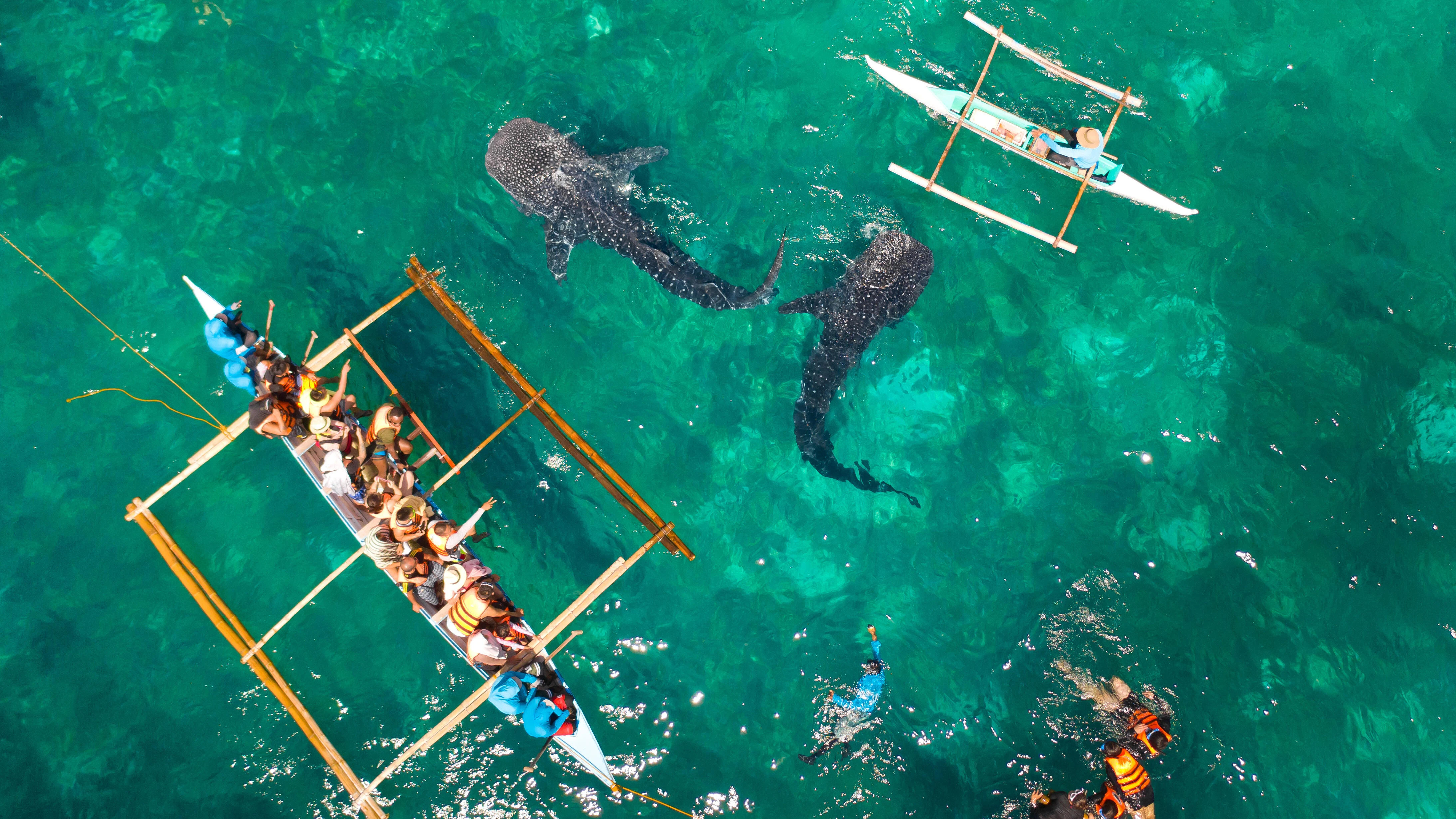
Cebu, a vibrant and cosmopolitan city in the Philippines, is known for its rich history, stunning natural beauty, and warm hospitality. As one of the country’s most popular tourist destinations, Cebu offers a treasure trove of attractions and experiences that will captivate every visitor.
From pristine white sand beaches and turquoise waters to historical landmarks and cultural festivals, Cebu has something for everyone. Whether you are a history buff, adventure seeker, or simply looking to relax and indulge in delectable cuisine, this bustling metropolis has it all.
In this article, we will dive into 36 fascinating facts about Cebu that will give you a deeper understanding of its past, present, and future. So, fasten your seatbelts as we embark on a journey of discovery and learn more about this enchanting city!
Key Takeaways:
- Cebu, the oldest city in the Philippines, offers a vibrant mix of history, culture, and natural beauty, making it a must-visit destination for travelers seeking enchanting experiences.
- From historical landmarks to stunning beaches and delicious cuisine, Cebu is a treasure trove of diverse attractions that cater to every traveler’s interests and preferences.
Cebu is the oldest city in the Philippines.
With a history dating back to 1565, Cebu City is the first Spanish settlement in the country and has played a pivotal role in shaping the nation’s history.
The iconic Magellan’s Cross is located in Cebu.
This historical landmark marks the spot where Ferdinand Magellan planted the cross in 1521, signifying the introduction of Christianity to the Philippines.
Cebu is a major hub for trade and commerce.
Due to its strategic location, Cebu has become a center for business and industry, attracting investors from around the world.
The Sinulog Festival is a vibrant celebration in Cebu.
Every January, Cebuanos gather to honor the Santo Niño (Child Jesus) in a grand procession and street parade filled with colorful costumes and lively dances.
Cebu is home to the famous Lechon.
Cebu’s lechon, a whole roasted pig, is renowned for its crispy skin and succulent meat, making it a must-try dish for food enthusiasts.
The Kawasan Falls is a natural gem in Cebu.
Located in the municipality of Badian, the stunning cascades of Kawasan Falls are a popular attraction for locals and tourists alike.
Cebu is a haven for diving enthusiasts.
With its crystal-clear waters teeming with marine life, Cebu offers world-class diving spots such as Moalboal and Malapascua Island.
The Taoist Temple is a prominent religious site in Cebu.
This ornate temple, perched on Beverly Hills in Cebu City, provides visitors with a captivating glimpse into the Taoist culture and beliefs.
Cebu boasts beautiful white sand beaches.
From the famous shores of Mactan Island to the serene beaches of Bantayan Island, Cebu offers a tropical paradise for beach lovers.
Cebu is renowned for its guitar craftsmanship.
The guitars made in Cebu are highly regarded for their quality, and the industry has been a significant contributor to the local economy.
The Basilica Minore del Santo Niño is a religious landmark in Cebu.
This centuries-old church houses the image of the Santo Niño, which is believed to be the oldest religious artifact in the Philippines.
Cebu is a gateway to stunning dive spots.
From Cebu, divers can easily access popular dive sites such as Pescador Island, which is known for its impressive marine biodiversity.
The beaches of Badian offer thrilling canyoneering adventures.
Adrenaline junkies can experience the exhilarating activity of canyoneering through the dramatic landscape of Badian’s canyons and waterfalls.
The Cebu Metropolitan Cathedral is an architectural masterpiece.
This grand cathedral, also known as the Metropolitan Cathedral-Basilica of the Holy Child, showcases stunning Spanish Colonial architecture.
Cebu is a melting pot of cultures.
The province boasts a diverse cultural heritage, influenced by its indigenous roots, Spanish colonization, and various migrant communities.
Lapu-Lapu City is named after a Filipino hero.
Lapu-Lapu, a native chieftain, famously led resistance against Ferdinand Magellan in the Battle of Mactan, making him a national hero.
Cebu is known for its vibrant nightlife.
The city offers a wide array of clubs, bars, and entertainment venues where locals and tourists can enjoy a lively night out.
The Temple of Leah is a tribute to undying love.
Inspired by ancient Roman architecture, the Temple of Leah was built by a husband as a testament of his everlasting love for his late wife.
Cebu is famous for its delicious dried mangoes.
Dried mangoes from Cebu are a favorite local delicacy loved for their sweet and tangy flavor, and they are exported worldwide.
The old Cebu Provincial Capitol is a historical landmark.
Designed by renowned Filipino architect Juan Arellano, this colonial-era building showcases beautiful neoclassical architecture.
Cebu is a booming center for the BPO industry.
The province has become a hub for Business Process Outsourcing (BPO) companies, providing employment opportunities for thousands of individuals.
The Magellan Shrine in Mactan commemorates the Battle of Mactan.
This monument stands as a remembrance of Lapu-Lapu’s victory over Magellan, highlighting the bravery and resilience of the Filipino people.
Oslob is known for its unique whale shark encounters.
Visitors can have the extraordinary opportunity to swim alongside these gentle giants in the waters of Oslob.
Cebuanos are known for their hospitality.
The locals of Cebu are renowned for their warm and welcoming nature, making visitors feel at ease and embraced by their vibrant culture.
The Metropolitan Cebu Water District supplies potable water to the province.
This government-owned utility ensures that the residents and visitors of Cebu have access to clean and safe drinking water.
Cebu is a treasure trove of historical landmarks.
From Fort San Pedro to the Yap-San Diego Ancestral House, Cebu offers a plethora of sites that showcase its rich history.
The Santo Niño de Cebu is the oldest religious image in the Philippines.
Dating back to Magellan’s arrival, the Santo Niño de Cebu holds great significance in the religious and cultural identity of the Filipino people.
Cebu is a shopper’s paradise.
From modern malls to bustling markets, Cebu offers a wide range of shopping options where visitors can find anything from local crafts to high-end fashion.
The Cebu Provincial Capitol Complex houses government offices.
This sprawling complex serves as the administrative hub of the Cebu provincial government.
The Tops Lookout provides a stunning view of Cebu City.
Perched on a hill, the Tops Lookout offers a panoramic view of the cityscape, making it a popular spot for tourists and locals alike.
Cebu is famous for its spicy and flavorful cuisine.
From mouth-watering seafood dishes to delectable street food, Cebu’s culinary scene is a gastronomic delight for food enthusiasts.
The Carbon Market is a bustling hub of local trade.
This vibrant market offers a wide array of fresh produce, handicrafts, and local products, giving visitors a glimpse into the daily life of Cebuanos.
Cebu hosts major international events and conventions.
With its world-class facilities, Cebu has been chosen as the venue for numerous international conferences, trade fairs, and exhibitions.
The Cebu Taoist Temple offers serene surroundings.
Set amidst lush greenery, the Cebu Taoist Temple provides a peaceful escape from the bustling city, inviting visitors to find inner tranquility.
Cebu is a gateway to nearby stunning islands.
From Cebu, travelers can easily access breathtaking destinations such as Bohol, Camotes Islands, and Dumaguete, offering a variety of natural wonders.
Cebu celebrates its birthday every August 6.
Known as “Cebu Day” or “Kadaugan sa Mactan,” this public holiday commemorates the historic Battle of Mactan and showcases Cebuano pride and heritage.
With its rich history, breathtaking landscapes, warm hospitality, and vibrant cultural scene, Cebu continues to captivate visitors from around the world. Experience the wonders of Cebu and create unforgettable memories in this stunning province.
Conclusion
In conclusion, Cebu is a vibrant and diverse city that offers a plethora of attractions and experiences for both locals and tourists. From its rich cultural heritage to its stunning natural wonders, Cebu has something for everyone. Whether you’re exploring historical landmarks, indulging in mouthwatering cuisine, or simply enjoying the picturesque beaches, Cebu will captivate you with its beauty and charm. With its warm and welcoming locals, vibrant festivals, and modern amenities, Cebu is truly a must-visit destination in the Philippines.
FAQs
1. What is the best time to visit Cebu?
The best time to visit Cebu is during the dry season, which usually spans from November to April. During this period, the weather is generally pleasant, with less rainfall and lower chances of typhoons.
2. How do I get to Cebu?
Cebu is easily accessible by air, with its international airport serving various domestic and international flights. It is also possible to reach Cebu by ferry from neighboring islands.
3. What are some popular attractions in Cebu?
Cebu boasts numerous popular attractions, including the historic Magellan’s Cross, the majestic Cebu Taoist Temple, the iconic Fort San Pedro, and the breathtaking Kawasan Falls.
4. Can I go island hopping in Cebu?
Absolutely! Cebu is a gateway to some of the most stunning islands in the Philippines. You can go island hopping to explore the beautiful beaches and crystal-clear waters of nearby islands such as Malapascua, Bantayan, and Camotes.
5. What is the local cuisine like in Cebu?
Cebu is known for its mouthwatering cuisine, especially the popular dish called “lechon” (roast pig). Other must-try delicacies include “puso” (rice wrapped in coconut leaves) and “sinuglaw” (a mix of grilled pork and fish ceviche).
Cebu's allure extends beyond its captivating facts. Delve into the world of Cebu Pacific Air, a homegrown airline that has soared to great heights. Explore the inspiring life story of John Gokongwei, a visionary entrepreneur who shaped the Philippine business landscape. Lastly, unravel the fascinating aspects of Mandaue, a city that seamlessly blends modernity with rich cultural heritage. Each article promises a unique and engaging journey, inviting you to discover more about the vibrant tapestry that is Cebu.
Was this page helpful?
Our commitment to delivering trustworthy and engaging content is at the heart of what we do. Each fact on our site is contributed by real users like you, bringing a wealth of diverse insights and information. To ensure the highest standards of accuracy and reliability, our dedicated editors meticulously review each submission. This process guarantees that the facts we share are not only fascinating but also credible. Trust in our commitment to quality and authenticity as you explore and learn with us.


